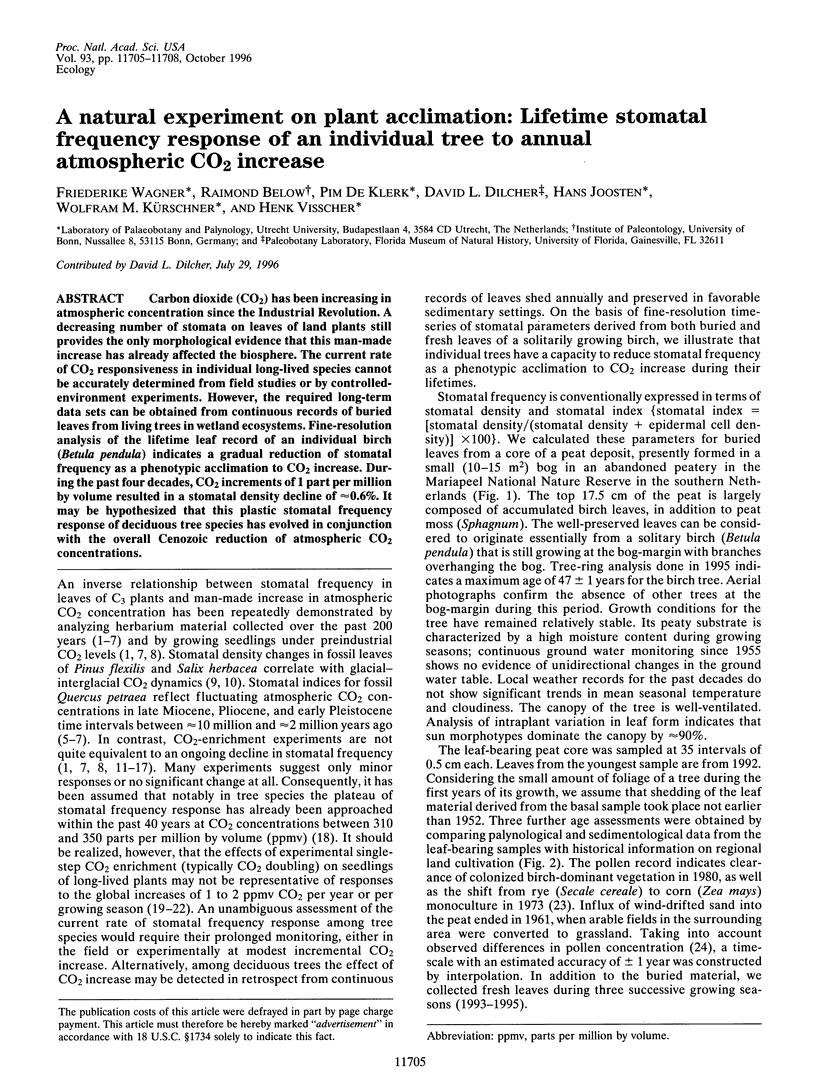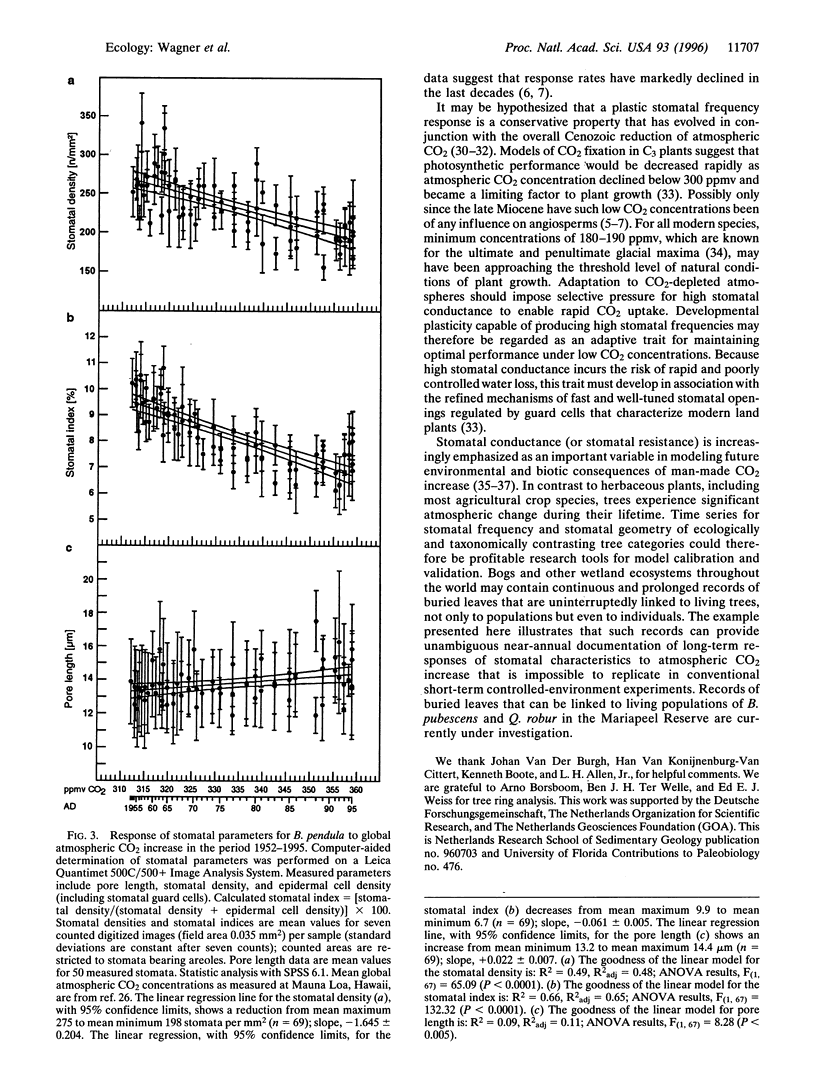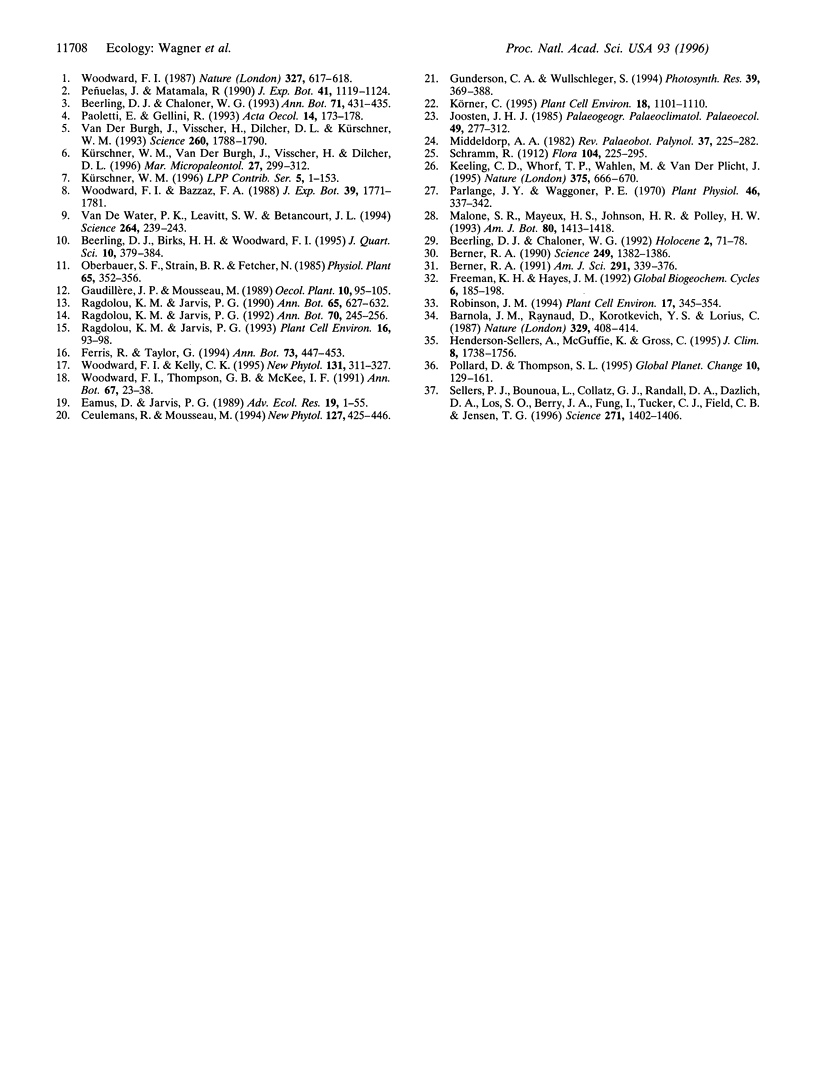Abstract
Carbon dioxide (CO2) has been increasing in atmospheric concentration since the Industrial Revolution. A decreasing number of stomata on leaves of land plants still provides the only morphological evidence that this man-made increase has already affected the biosphere. The current rate of CO2 responsiveness in individual long-lived species cannot be accurately determined from field studies or by controlled-environment experiments. However, the required long-term data sets can be obtained from continuous records of buried leaves from living trees in wetland ecosystems. Fine-resolution analysis of the lifetime leaf record of an individual birch (Betula pendula) indicates a gradual reduction of stomatal frequency as a phenotypic acclimation to CO2 increase. During the past four decades, CO2 increments of 1 part per million by volume resulted in a stomatal density decline of approximately 0.6%. It may be hypothesized that this plastic stomatal frequency response of deciduous tree species has evolved in conjunction with the overall Cenozoic reduction of atmospheric CO2 concentrations.
Full text
PDF



Selected References
These references are in PubMed. This may not be the complete list of references from this article.
- Berner R. A. Atmospheric carbon dioxide levels over phanerozoic time. Science. 1990 Sep 21;249(4975):1382–1386. doi: 10.1126/science.249.4975.1382. [DOI] [PubMed] [Google Scholar]
- Freeman K. H., Hayes J. M. Fractionation of carbon isotopes by phytoplankton and estimates of ancient CO2 levels. Global Biogeochem Cycles. 1992 Jun;6(2):185–198. doi: 10.1029/92gb00190. [DOI] [PubMed] [Google Scholar]
- Parlange J. Y., Waggoner P. E. Stomatal dimensions and resistance to diffusion. Plant Physiol. 1970 Aug;46(2):337–342. doi: 10.1104/pp.46.2.337. [DOI] [PMC free article] [PubMed] [Google Scholar]
- Van Der Burgh J., Visscher H., Dilcher D. L., Kürschner W. M. Paleoatmospheric signatures in neogene fossil leaves. Science. 1993 Jun 18;260(5115):1788–1790. doi: 10.1126/science.260.5115.1788. [DOI] [PubMed] [Google Scholar]
- Van de Water P. K., Leavitt S. W., Betancourt J. L. Trends in Stomatal Density and 13C/12C Ratios of Pinus flexilis Needles During Last Glacial-Interglacial Cycle. Science. 1994 Apr 8;264(5156):239–243. doi: 10.1126/science.264.5156.239. [DOI] [PubMed] [Google Scholar]


